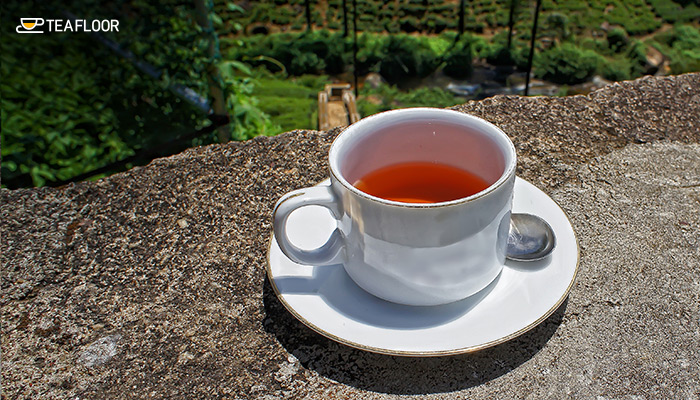We all know about Darjeeling tea and how it is famous around the world. The tea is famous for its unique “Muscatel Flavour” which makes it more acceptable among tea lovers. This unique flavor can be attributed to the cool and moist climate, the soil, the abundant rainfall requires in a year of around 50” to 60” and the sloping terrains.
The story of Darjeeling Tea is intertwined with the history of Darjeeling built over 150 years from the time of the British Rule. The history of Darjeeling tea dates back some 150 years to be precise. The tea was first planted as an experiment by Dr.Campbell (civil surgeon) at his garden at Beechwood, Darjeeling, 7000ft above sea level. He later on gave orders for raising the plant to the government in 1847, at the tea nurseries. The first commercial tea gardens (in 1952) which were planted by the British were Tukvar, Steinthal and Aloobari tea estates. These estates used the seeds from the government nurseries and here the production of Darjeeling tea started. Since tea was a labor intensive enterprise, it required lot of manpower and hence employment was offered to the local people of Darjeeling and people across the border of Nepal.
In 1866, Darjeeling had 39 gardens which produced approximately 21,000 kilograms of tea and by 1870, it had 56 gardens which produced around 71,000 kilograms of tea. The Darjeeling Tea Company was established in 1860-1864 with four new gardens. Today these gardens are famous for producing the world’s best aromatic teas. Darjeeling has 86 tea gardens which produce about 10 million kgs of tea annually. Tea is grown in Darjeeling from a height of 100 mts.(300ft) to 2000mts (6000ft). Now days, more than seventy percent of the Darjeeling tea gardens have started producing organic teas which involves no use of chemical fertilizers. Also, they are certified by world renowned institutes like IMO (Switzerland), Demeter`s certification (Germany), India Organics, USDA etc. There occurs four major harvesting of the Darjeeling crops in a year.
The first crop or the first flush is produced from the 1st week of March to the 1st week of May. The tea is green in colour and is mildly aromatic. The second crop or the second flush has more of muscatel flavor and is harvested from the end of 3rd week of May to the 3rd week of June. The third flush is also known as the “Rains crop” and is harvested in second week of July-September. This is a low grade tea due to monsoons and the brew is very dark with a dull character. The last and final is called as the “autumnal flush” which is harvested from the last week of September to the 2nd week of November. The tea produced in this has a very unique aroma.
There is still more about Darjeeling tea if you look over the internet. Darjeeling tea is made from the black tea but now you can buy Darjeeling Oolong and Green teas. Log on to teafloor and buy the best Darjeeling tea online.

I’m a Blogger, always ready to explore new things. Starting from Technology to Seo, webiners etc. Driving more and more traffic to our website is my passion.

Respect to post author, some good entropy.
thank you for sharing the amazing blog. This blog very helpful for me I am very glad to you